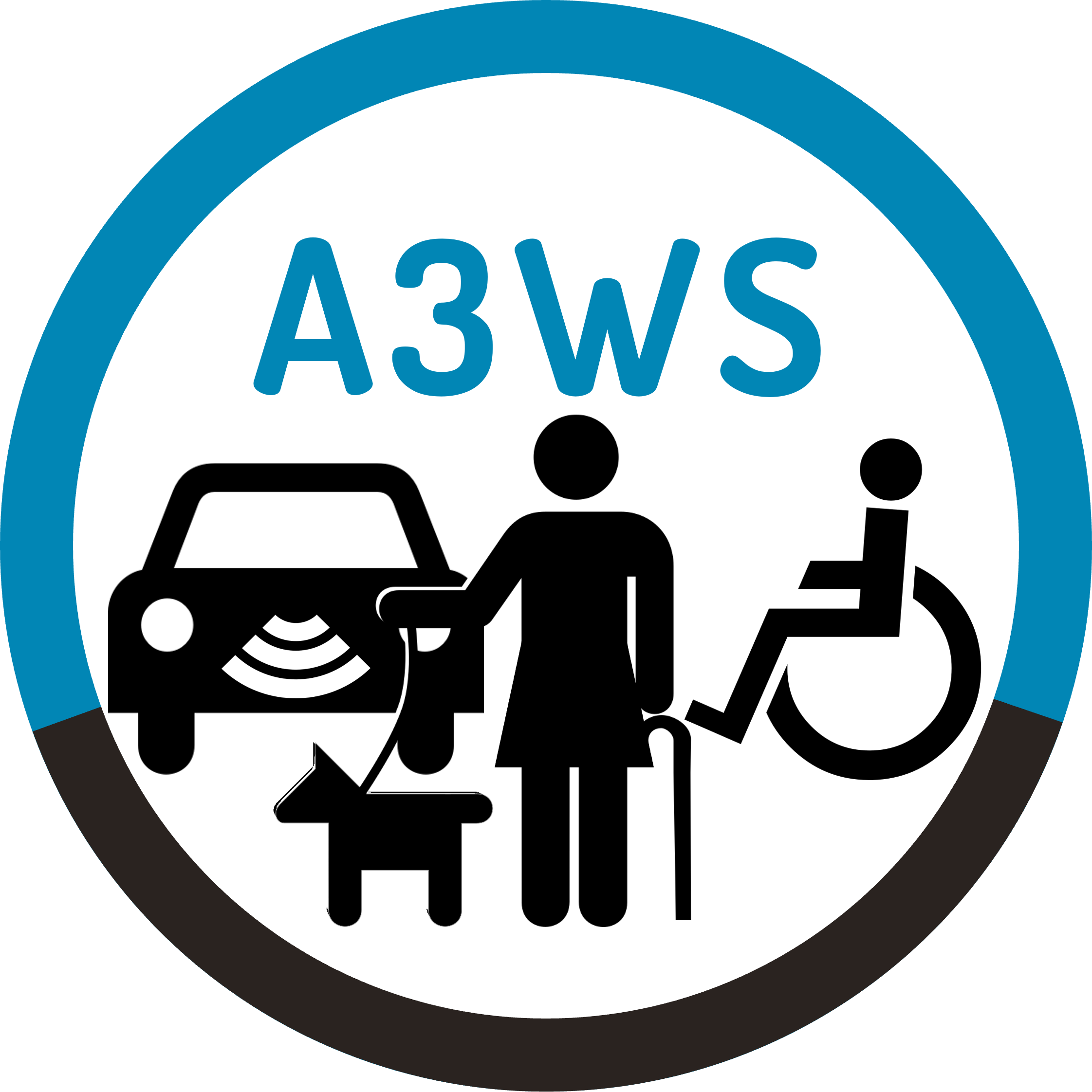Background
To be understandable and acceptable by other road users, automated vehicles (AVs) might need to communicate in a special way [12, 15]. This workshop will focus on the communication between AVs and vulnerable road users (VRUs), especially those who benefit most from inclusive design, like children, older adults or people with disabilities and reduced mobility, cognition, vision, or orientation. This part of the population is largely underrepresented in AV-VRU research [6, 10].
Previous works on the interaction between VRUs and AVs through external human-machine interfaces (eHMIs, see Figure 1) [6, 10, 15, 19] or by simulating social interactions via eye contact or gestures [33] focus primarily on visual stimuli (e.g., [14, 28]), and do not comply with the principles of Universal Design [7], as they exclude people with visual, cognitive, or motor impairments [6]. Our previous workshops focused on exploring eHMI designs [26], methods to evaluate them [9, 27], and also started the discussion on inclusive eHMIs [13, 18]. Building on these workshops, our goal is to continue the discussion on inclusive solutions for the AV-VRU interaction, specifically focusing on the international perspective and identifying the obstacles to consolidating the vast amount of eHMI concepts into a few inclusive ones.
Of particular interest in this workshop are children, older adults, and people with accessibility needs. Children between the ages of six and thirteen are the most vulnerable subgroup among cyclists due to their still developing motor and perceptual-motor skills [1, 11, 22 – 25], but are underrepresented in previous eHMI studies [8]. Research also shows that older adults are underrepresented in studies. At the same time, they have difficulties with regard to taking road-crossing decisions [31], and have different expectations for automated driving than younger adults [20], take longer to adapt to new technology [2], and have different requirements [17]. Further, people with auditory/visual impairments constitute a significant proportion of the VRU demographic [3, 29, 30], but are largely uncatered for, especially given the predominance of visual eHMI concepts [4 – 6, 21].

